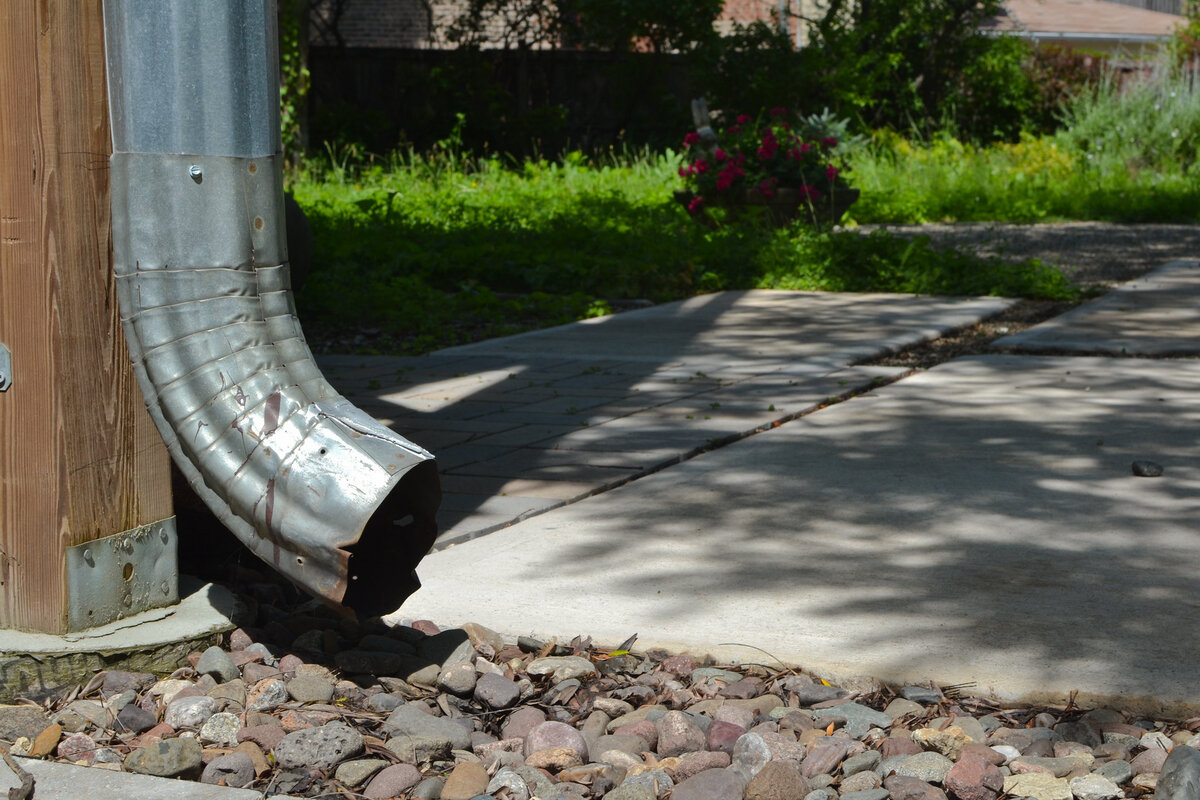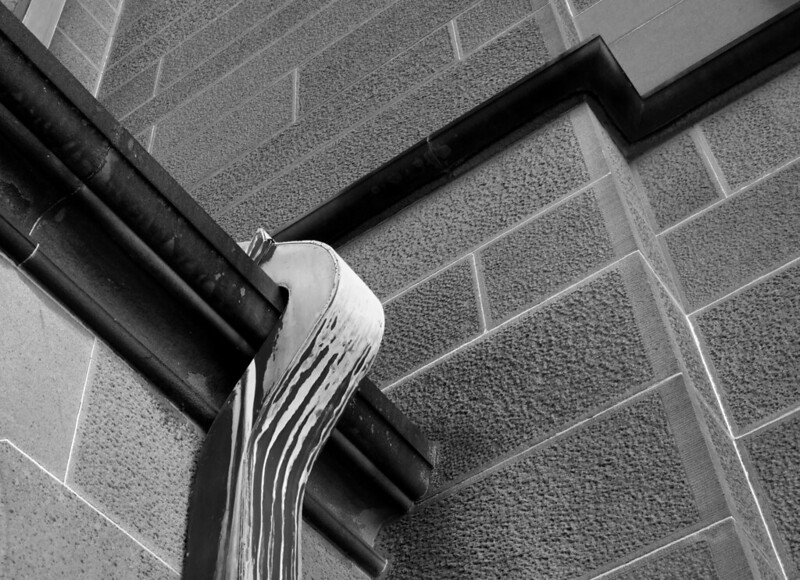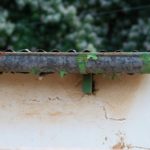
So you’ve decided to DIY your rain gutters, and you’ve come to the downspout. What’s next? Your downspout is a crucial part of your gutter system, and its installation is just as integral. Whether you’ve decided to install gutters yourself or your need to replace a damaged downspout, it’s pretty simple. Here’s everything you need to know about installing or replacing a gutter downspout.
In this article:
- What is a Downspout?
- How Does a Downspout Function?
- Downspout Options
- Tools You’ll Need
- Before You Start
- Step-by-step Installation
- Downspout FAQs
What is a Downspout?

Gutter downspouts are vertical, pipe-like devices connected to gutters. They’re installed along the sides of buildings and redirect water safely away from your home.
How does a downspout function?
When it rains, water runs from your roof into your gutters. Gutters collect that rainwater, which travels along the gutter to downspouts. Downspouts then route that water to the ground.
Downspouts are made of three key parts:
- The downspout is attached to a gutter elbow, the curved piece that connects the gutter to the vertical downspout.
- The downspout bracket or straps secures the downspout to the side of the home, keeping it from moving when water passes through it.
- An extension at the bottom end of the downspout is simply a piece that carries water horizontally away from the home.
Downspout Options
Downspouts come in a variety of types and styles, just like gutters themselves. There are all types of gutter materials, including aluminum gutters, vinyl gutters, PVC gutters, seamless gutters and stainless steel gutters.
The standard and most common type of downspout is the K-style gutter, which looks like the letter K when viewed from the side.
A rectangular downspout is the second most common downspout style. They’re also referred to as a “box gutter,” because they are shaped like rectangular boxes running down the side of a building or home.
A round downspout is usually used with half-round gutters.
Each comes in a variety of sizes.
When it comes to choosing a downspout, the pros say you should take into consideration the gutter volume, the size of the roof and the quantity of rainfall during the rainy season. But overall, they advise it’s better to go bigger. Why? It’ll actually lessen the chance of leaves and other debris clogging your system.
Add some gutter guards, and those chances will decrease even more. Plus, you won’t be doing nearly as much gutter cleaning.
Tools You’ll Need
You’ll need what you need for gutter installation, plus a few more items:
- Ladder
- Cordless drill
- Round hole saw attachment for your drill (should be the same size as your petty drop, generally 2 ⅜ inches)
- Hacksaw
- Sheet metal screws or rivets
- Screws to connect the downspout straps to the side of the house. NOTE: The screws you purchase should be appropriate for the siding of the home. Use masonry screws for a masonry home, wood screws for a wood home.
- A petty drop, which is a round metal cylinder that fits snugly in the hole you will cut into the bottom of the gutter
- Downspout extensions
- Gutter sealant
- And, of course, your downspout, elbows and downspout brackets or straps
Before You Start
You’ll want to identify the exact downspout locations, and where they’ll drain.
Typically, you want one downspout for every 40 feet of gutter. Experts also say to make sure your downspout outlet drains water at least four to six feet away from your house, but 10 feet of distance between your home and drainage is optimal. Another tip? Make sure the end of the gutter is clear of any landscaping features, as running water can wash away or harm plants.
Step-by-step: Install Your Downspout
STEP 1: If you are replacing your old downspout, unscrew and detach the downspout from its base.
If you don’t already have a hole or downspout gutter section on your gutter, drill a hole in your gutter using a round saw attachment on a drill. NOTE: Make sure the round saw attachment is the same size as the petty drop so the petty drop cylinder fits snugly in the hole.
STEP 2: Line the lip of the petty drop with a sealant and place it in the hole, pipe down. Push it down firmly but gently into the gutter.
STEP 3: Insert the first elbow over the petty drop, facing toward the house.
STEP 4: Using a hacksaw, cut your gutter extender to the correct length. Slide another elbow onto the extender. If you’re working with an aluminum downspout, crimp each piece to hold it together until you’re done with the downspout installation.
STEP 5: Make your measurements for the length of the downspout and, using the hacksaw, cut it.
STEP 6: Attach the downspout to the elbow coming down from the gutter, and insert the other elbow and extender into the bottom of the downspout.
STEP 7: Now it’s time to install the bracket, or straps. Install one strap toward the top of the downspout and another toward the bottom. Wrap the strap around the gutter and screw it into the exterior wall on both sides of the gutter.
STEP 8: Use small sheet metal screws to screw the sections of gutter together.
Downspout FAQs
Why are downspouts important parts of my gutter system?
Downspouts route rainwater from your gutter system and away from your home, protecting it from foundation damage. You should replace gutters and downspouts when they’re damaged, or about once every 20 years. Old gutters pose a risk to your roof and foundation.
How simple is it to install a downspout?
Whether you’re looking at a DIY gutter install or you just need to do a little gutter repair, installing a downspout is pretty easy, and many homeowners take on this simple home improvement task.
Need a pro?
Gutters can be an overwhelming job. If you’d prefer to leave the heavy work to someone else, check out our lineup of gutter experts for help.
Main Image: Center for Neighborhood / Flickr / CC BY-SA 2.0





